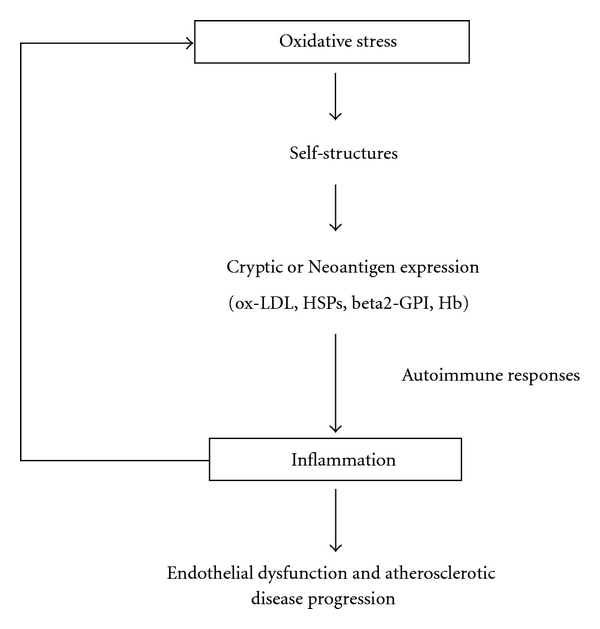Figure 1.

Schematic representation of the relationship between oxidative stress and inflammation in cardiovascular diseases. Patients with atherosclerosis are characterized by strong oxidative stress conditions. Prooxidant compounds that form may interact with molecular and cellular components thus determining expression of cryptic antigens, such as HSPs, and/or structural modifications of self-molecules and generation of neoepitopes, such as oxidized LDL. These cryptic or neoantigens may trigger autoimmune reactions, thus sustaining the inflammatory mechanisms involved in endothelial dysfunction and plaque progression. Of note, molecular and cellular mediators of inflammatory mechanisms sustain oxidative stress, thus creating a pathogenic system that amplifies itself. Ox-LDL: oxidized low-density lipoproteins; HSPs: heat shock proteins; beta2-GPI: beta2-glycoprotein I; Hb: haemoglobin.
